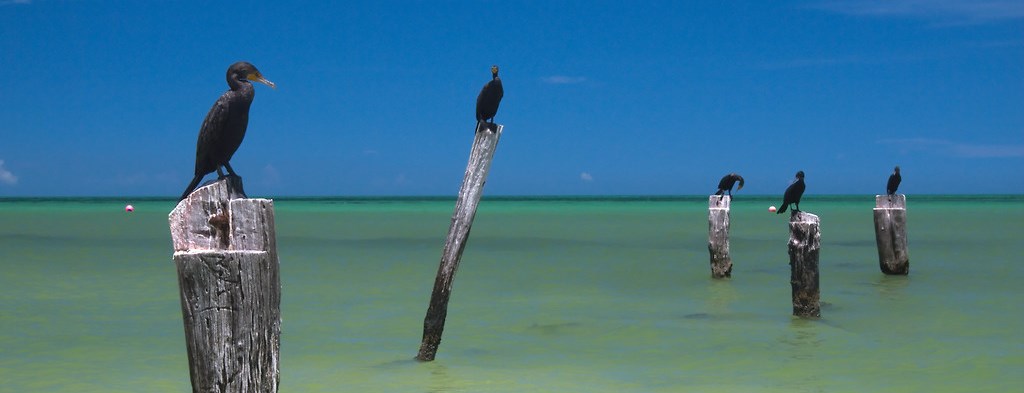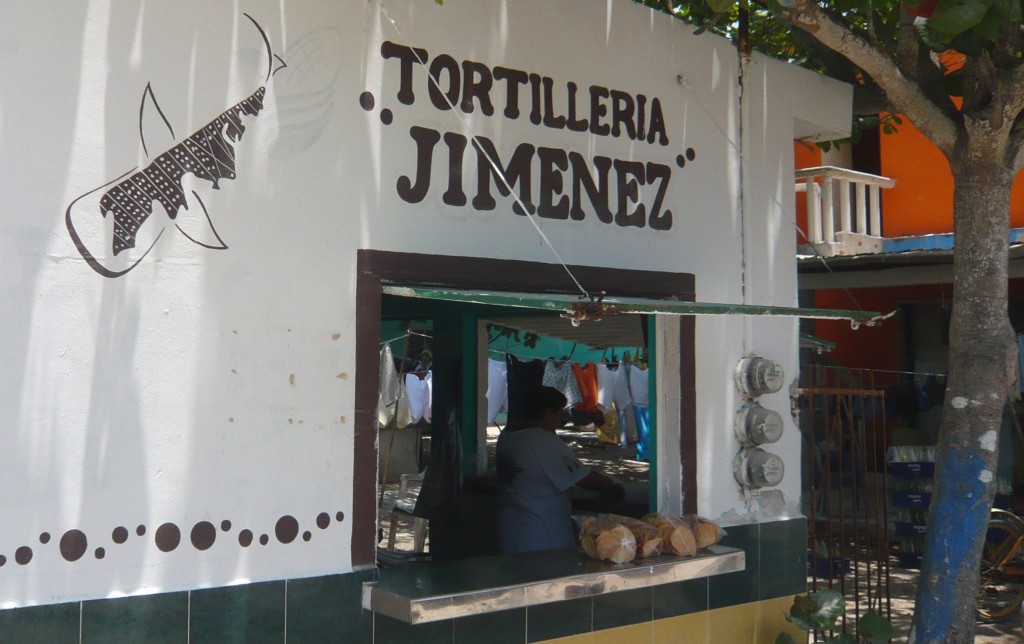by Professor Michael Redclift, ILAS Associate Fellow
Professor Michael Redclift, Emeritus Professor of International Environmental Policy in the Department of Geography at King’s College London, presents a snapshot of adaptive change on Holbox, just off Mexico’s Yucatán Peninsula, which has ‘rebranded’ itself as “Whale Shark Island”
(n.b. Cambridge University is hosting a conference on “Branding Latin America” on April 8, 2015).
 The history of Holbox is wrapped in myth. Explorers Stephens and Catherwood stayed nearby, at Yalahau (Chiquila) on April 4, 1842, and mentioned the surrounding coast . At the time the pirate Molas was operating in the area with some success, and seems to have had the confidence of local fishing communities. However, it was not until 1883 that (old) Holbox was officially founded. In 1889 a serious hurricane destroyed the village and a new settlement was formed around a 100 metre square grid system. The village was complete by 1893 and it is still referred to as the ‘new town’ or ‘new Holbox’.
The history of Holbox is wrapped in myth. Explorers Stephens and Catherwood stayed nearby, at Yalahau (Chiquila) on April 4, 1842, and mentioned the surrounding coast . At the time the pirate Molas was operating in the area with some success, and seems to have had the confidence of local fishing communities. However, it was not until 1883 that (old) Holbox was officially founded. In 1889 a serious hurricane destroyed the village and a new settlement was formed around a 100 metre square grid system. The village was complete by 1893 and it is still referred to as the ‘new town’ or ‘new Holbox’.
The early days of the Holbox economy
In the 1920s and 1930s Holbox featured at the margins of what was still viewed as a geographical periphery, even in Merida. Its founders, unlike those of Cozumel and Isla Mujeres (with whom Holboxenos have intermarried and whom they hold in high regard), were not Mayan refugees from the rebel Maya forces during the Caste War but descendents of sailors and non-Mayan Mexicans. (Today there are only three Maya speakers on the Island and they are all from outside). Most of the trade was in dyewood and some hardwoods. Some chicleros came and rested on the island after spending three or four hard months of work in the forests. Later the fishing activities developed for sale, especially shark fishing, which produced shark skin and shark fins, which were sold profitably. There was also some copra [husk of coconuts used for matting] production, mainly on the mainland, with which people from Holbox were associated.
 Adaptation on Holbox: from fishing…
Adaptation on Holbox: from fishing…
Fishing has always been the principal activity of households on Holbox. Before the 1970s the commercialisation of the catch was poorly developed and most boats caught a ‘random’ collection of species. Indeed, before 1960 the most important item was probably turtles (about sixty per cent by value) and shark, but after 1970s the number of turtles caught declined slowly. During the 1960s lobster fishing increased in importance: in 1969 it represented about three quarters of the value of the catch in Quintana Roo as a whole. Most of the lobster was exported to the United States, but with the growth of Cancun in the late 1970s and 1980s a local market came into play. Lobster fishing had some clear advantages for artisan fishers: lobster were easily available and had high commercial value; they could be caught using relatively simple technology and in shallow water; and lobster fishing could absorb a large number of fishers and enable the reproduction of the household economy without access to much outside investment.
…to developing the ‘brand’: Welcome to ‘Whale Shark Island’!
Nobody seems entirely sure who it was that first drew the attention of Holbox islanders to the tourist potential of the whale sharks. It is generally agreed that about ten years ago the fishing families began taking visitors out to see the whale sharks – initially this was a small scale venture. The waters where the whale-sharks congregate is far from the shore but the water is relatively shallow – just twenty metres or so. In most other parts of the world where whale-sharks congregate, such as off the Honduran coast and in India, the waters are much deeper. Consequently, it is easier to see, and to swim with, the whale-sharks off Holbox. It is a measure of the adaptive speed of the Holboxenos that they quickly developed a ‘logo’ for their island that incorporated the whale-shark. The shark has come to inhabit the island, as it were, and the island to inhabit the shark. This logo is now used everywhere, on houses that have been refurbished, on the front of shops and cafes and in hotels. It is a piece of design genius which has enabled the locals who benefit from the whale-shark season, and the hotel entrepreneurs, to become a global brand – and be advertised on the World Wide Web. Local people also insist that their interest is in conserving the whale-sharks rather than hunting them so, in this at least, they are displaying conservation objectives. The brand is also used widely in web advertising for Holbox’s whale-shark season, which boosts local tourism.
Image attributions:
1.) Sarunas Burdulis (CC via Wikimedia)
2.) Tomas Castelazo (CC via Wikimedia)
3.) copyright Michael Redclift.



Neat! Thanks Michael. New technologies, such as drones, used by tourists or locals can also capture images from localities or experiences within these localities that add new angles to the branding process: https://www.thedodo.com/whale-shark-drone-video-787099961.html